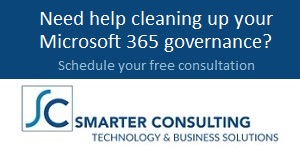Identifying and Engaging Microsoft 365 Influencers
Looking for the key internal influencers to help drive adoption within your organization? Let’s talk about the quiet ones. The people who don’t sit in on your governance calls or show up in the project charter, but somehow always seem to know how to get things done in Microsoft 365. They’ve already created the Teams site you were planning to roll out next quarter. They have a Power Automate flow that’s saving half their department four hours a week—and they built it on a lunch break. They aren’t in charge, but people follow their lead anyway.
You know these people. Every organization has them. We just don’t always recognize what they are: influencers.
 And I don’t mean the Instagram variety. I mean the internal champions, the ones who figure things out early and pull others along with them—not through hierarchy, but through trust. When they speak, people listen. When they try something new, people copy it. When they say “this is useful,” it doesn’t matter whether it came from IT, the vendor, or a rogue SharePoint site from 2013. People believe them.
And I don’t mean the Instagram variety. I mean the internal champions, the ones who figure things out early and pull others along with them—not through hierarchy, but through trust. When they speak, people listen. When they try something new, people copy it. When they say “this is useful,” it doesn’t matter whether it came from IT, the vendor, or a rogue SharePoint site from 2013. People believe them.
In the world of Microsoft 365, these people can make or break your success.
Influence > Instruction
The traditional approach to software adoption—especially in the enterprise—is what I’d call “top-down plus training.” Leadership picks a tool, IT implements it, and users get an email with a launch date and a link to a SharePoint page full of videos no one watches. Maybe there’s a lunch-and-learn. Maybe someone builds a Yammer (er, sorry – Engage) group and calls it “community.”
And then we wonder why usage stalls out three weeks later.
What actually drives adoption isn’t instruction. It’s influence. It’s social proof, peer trust, and visible wins. People need to see someone they respect using the platform in a meaningful way. They need to believe it’ll help them succeed, not just comply. Which brings us back to those internal influencers.
Finding the Champions You Already Have
Here’s the thing: you’re probably already paying the salaries of your best Microsoft 365 evangelists. They’re scattered across departments. Some are in ops, some in finance, a few lurking in HR. And they’re doing things with Teams, Power Apps, SharePoint, or Copilot that your project team hasn’t even dreamed up yet. But unless you go looking for them, you’ll never know.
Identifying these folks isn’t rocket science, but it does take intention. Start by looking at usage patterns. Who’s creating content early in a rollout? Who’s spinning up Power Platform solutions before anyone asked them to? Who’s sharing meeting recordings, using Viva Insights, poking around Copilot previews? Usage data is your first lens. But it’s not enough.
Next, listen to the grapevine. Ask team leads, project managers, or anyone who actually works with people, “Who do your colleagues go to when they’re stuck in Teams or confused about Planner?” The answer won’t be in your org chart, but you’ll hear the same names bubble up again and again.
That’s your short list.
From Rogue Champions to Structured Influence
Now what? Once you’ve found your influencers, do not, I repeat do not, bury them in an ambassador program with six monthly calls and 40-slide decks. You’ll smother their initiative. The goal isn’t to turn them into unpaid IT trainers. It’s to amplify what they’re already doing.
You want to equip them. That could mean giving them early access to features. Sharing real-time rollout plans. Giving them a private Teams space with your adoption leads and PMs. You want these folks in the loop before you push comms to the broader org—because they’ll shape how that message lands. Give them the tools, the confidence, and just enough support to keep doing what they already do naturally.
And, most importantly, recognize them. Publicly. Internally, of course, but maybe externally too. Help them apply for MVP. These aren’t just power users. They’re strategic partners. Treat them accordingly.
Go Beyond Your Firewall
Internal influencers are step one. But if you want to play the long game, you should also be looking beyond your org chart.
The Microsoft community is massive. And weirdly generous. The MVPs, RDs, user group leaders, podcast hosts, bloggers—they’re out there building content, sharing workarounds, and experimenting with new features well before Microsoft’s own documentation catches up. These are people who live and breathe this stuff, and they are usually more than happy to engage, advise, and occasionally hop on a Teams call to help a client “unstick” a rollout.
Get to know them. Follow them. Join their user groups. And if you’re really committed—bring them in. Not just for training, but for strategy. MVPs aren’t just educators. They’re barometers for what’s working in the wild. They’ve seen ten other companies try what you’re doing, and they already know the potholes. Use that knowledge.
Measuring the Impact of Influence
Let’s be real. None of this counts if it doesn’t move the needle.
So how do you measure success?
Start with engagement metrics. But look past logins and licenses. What you want to see is behavioral change. Are more people sharing content in Teams channels instead of email? Are meetings shorter because of Loop or Copilot? Is there a measurable drop in shadow IT? Those are your signals.
Track reach: how many teams or departments are actively engaging with your influencer network? Look at velocity: how quickly do new features get adopted in influencer-supported groups versus others? And don’t overlook sentiment. If users start asking, “Can we get more training like that?” or “Why doesn’t every department have someone like Sarah?”—you’re onto something.
Influence Isn’t Optional
Too often, IT leaders treat influence like frosting: nice to have, but not essential. They see adoption as a process problem, not a people problem. But influence isn’t a luxury. It’s infrastructure. And like all good infrastructure, when it’s working, you don’t notice it—you just move faster, with less friction.
Microsoft 365 is a moving target. New features every month, new AI experiences rewriting workflows in real-time. You can’t scale that with slide decks and webinars. You need trusted guides. Embedded experts. People who can say, “I tried this, and here’s what works.”
Those people already exist. Your job is to find them, back them, and get out of their way. Because the future of digital adoption isn’t rolled out from the top. It spreads sideways—through influence.




